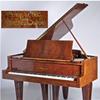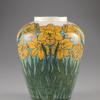Getty Museum Announces Intent to Acquire Renaissance Masterpiece
- LOS ANGELES, California
- /
- August 29, 2016
The J. Paul Getty Museum announced Monday its intention to acquire Virgin with Child, St. John the Baptist, and Mary Magdalene (about 1530-40) by Parmigianino (Italian, 1503-1540), one of the most celebrated painters of the Italian Renaissance. Extremely well-preserved, the painting is a supreme example of the artist’s mature Mannerist style and represents sixteenth-century painting at its finest.
The painting is documented in the famed Barberini collection in Rome in the mid-seventeenth century and was recently on loan to the Getty Museum where it was shown alongside works by Pontormo and Bronzino. Before that, the painting was on long-term loan to the National Gallery in London.
The acquisition is subject to an export license being granted by the Arts Council England. The export application is being filed by the seller’s representative, Sotheby’s, on the Getty’s behalf.
“This is a rare opportunity for us to enrich our collection with a masterpiece from one of the most accomplished Italian artists of the sixteenth century,” says Timothy Potts, director of the J. Paul Getty Museum. “Paintings of this importance and in such superb condition very rarely become available on the market these days. It will make a spectacular addition to our galleries in the context of other great sixteenth-century paintings by Pontormo and other masters who transformed the classicizing naturalism of the Renaissance into visions of more mannered and theatrical elegance.”
Francesco Mazzola, better known as Parmigianino—a nickname derived from his native town of Parma—is one of the greatest Italian painters, draughtsman, and printmakers of the sixteenth century. During a career that lasted only two decades, he executed a wide range of work, from small panels for private devotion, to large-scale altarpieces and frescoes, to brilliantly executed portraits. Few painters had a greater influence on the art of their century, and his intellectual and elegant style spread far and wide, despite his very brief life.
The unconventional iconography of this painting typifies Parmigianino’s innovative work: the Christ Child turns from the Virgin Mary to embrace his young cousin, John the Baptist, whose hands are joined in prayer. Mary Magdalene holds the Christ Child under his arms while looking back at the Virgin. Intended for private devotion, the intimate religious subject exhibits Parmigianino’s characteristic polished and enamel-like paint surface and exquisitely rendered details; the lush landscape, elaborate hairstyles of the two women, interplay of hands, and still life with the jewels of Mary Magdalene enhance the transcendent beauty of the composition. Parmigianino executed the painting on paper laid down on panel, a unique feature in his surviving work, and one which reflects his accomplishment as a draughtsman.
“Pope Clement VII hailed Parmigianino as ‘Raphael reborn,’ and his style was extremely influential during the course of the sixteenth century,” says Davide Gasparotto, senior curator of paintings at the J. Paul Getty Museum. “This painting, with its impeccable provenance and exceptional state of preservation, shows the artist at the peak of his maturity.”
The painting complements a number of the Getty’s existing Italian Renaissance paintings, including Head of Christ (about 1530) by Correggio (about 1489-1534), The Rest on the Flight into Egypt with St. John the Baptist (about 1509) by Fra Bartolomeo (1472-1517) and works by Giulio Romano (before 1499 – 1546), Sebastiano del Piombo (1485-1547) and Jacopo Pontormo (1494-1557).

270x400_c.jpg)


















